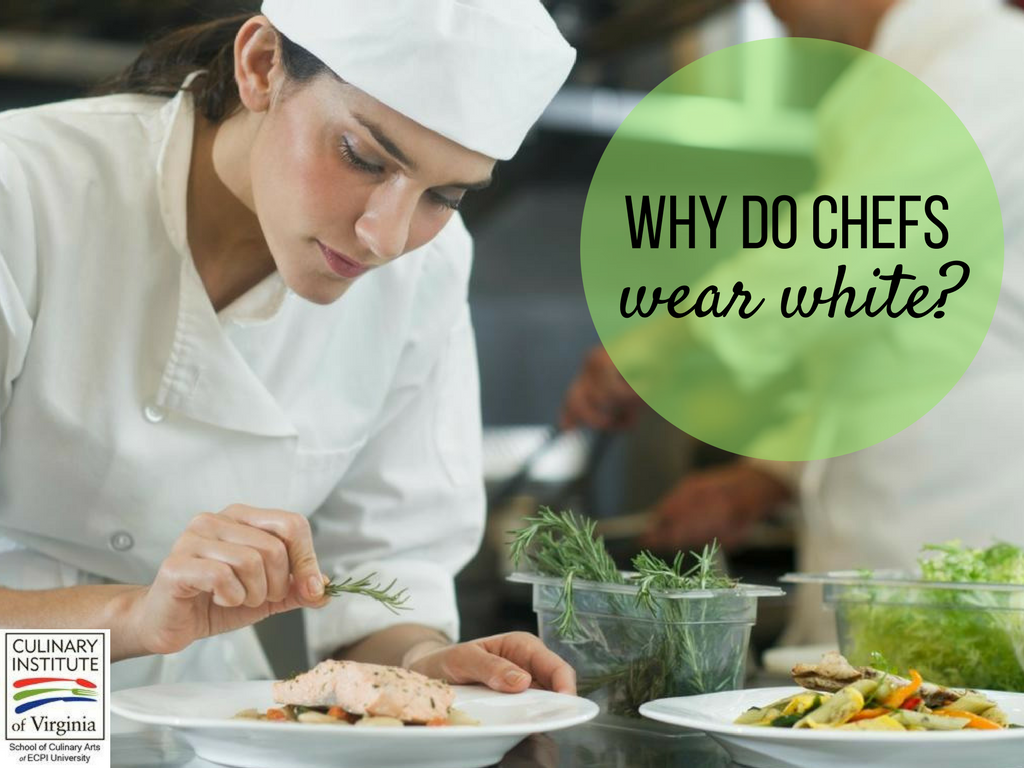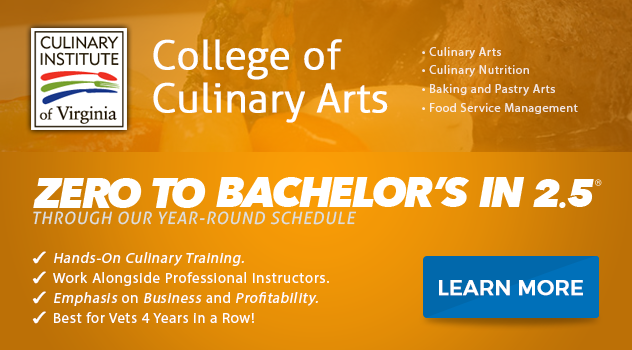Why do Chefs Wear White?
And Other Culinary Arts Lore
Many of culinary art’s origins are steeped in mystery. Since eating food and preparing it has been around since recorded history, a great deal of culinary breakthroughs, famous figures, and even the meaning behind some practices are highly debated, at best. Here are some culinary questions you might have wondered but never thought to ask about.
Why Do Chefs Wear White?
When you think of what color you should wear for what is inevitability going to be a messy job, you probably wouldn’t think of white. But chefs wear this color for a variety of reasons. First of all, the color white is reflective. Instead of absorbing heat, like the color black does, it helps chefs stay cool in the heat of the kitchen.
Next, stains are going to happen, but white is easily bleached, helping jackets to return to their original shade better than another color. Not only this, but since the traditional jacket is double breasted, it allows chefs to switch the front of their jacket should they spill anything on it. White also symbolizes cleanliness, an association every professional kitchen wants people to make.
Who was the First Celebrity Chef?
The question of who was the first chef period is lost to history. But celebrity chefs didn’t come around when the Food Network started. Bartolomeo Scappi was a chef who lived during the 1500s. This Italian cook has little background, as people can neither agree on his date or location of birth. But what is known is his innovative and ingenious methods of cooking.
Scappi, a contemporary of Michelangelo, was known for cooking for popes and cardinals. His skill in the kitchen was only matched by his skill at outwitting spies. During the papal enclave, where the cardinals convene to pick the new pope after the previous one has stepped down or passed away, he had to make sure the food was poison-free and no one smuggled in any secret notes to the sequestered men.
In his later life, Scappi wrote a cook book where he outlined elements of food science and included diagrams so others could follow his recipes exactly. A pioneer in his field, Scrappi included a section on food for the sick in the last section of his book. His later life is unknown as he retired after a papal election and fell out of the public eye.
Who Invented Margherita Pizza?
The origins of pizza itself is lost to history. Some theories include that it was based off of a Sardinian flatbread, dating back around 7000 years. Meanwhile, Italian pizza is based off of the focaccia flatbread. But there is a recorded history of where the Margherita pizza came from.
In 1889 the Queen Consort of Italy, Margherita of Savoy, visited a pizzeria. Pizza chef Raffaele Esposito wanted to do something special to commemorate her visit, so he decided to crate a pizza that incorporated the colors of the Italian flag. With red tomatoes, white mozzarella, and green basil, he named the dish Pizza Margherita. It’s still prepared in a similar fashion today.
What is the Plural of Asparagus?
Asparaguses? Asparagi? What do you think?
When you’re explaining a dish to a superior, a fellow chef, or a hungry diner, the last thing you want to do is make it sound like you don’t know what you’re talking about. So when you talk about the plural of “asparagus”… it’s actually “asparagus”.
For example, if someone says, “I’m cooking a chicken dish with a side of asparagus,” you wouldn’t assume they’re cooking a single stalk of asparagus as a side for their chicken dish. Just like when you hear someone say, “Add more lettuce,” you won’t think that you need to add a single leaf.
Are you interested in the culinary arts and dream of becoming a chef? If you want to earn a Associate of Applied Science Degree in Culinary Arts, consider ECPI University’s Culinary Institute of Virginia. With an accelerated schedule and hands-on approach to learning, you could graduate sooner with the practical skills that you need. For more information on this exciting career, contact a friendly admissions advisor today.
It could be the Best Decision You Ever Make!
DISCLAIMER – ECPI University makes no claim, warranty, or guarantee as to actual employability or earning potential to current, past or future students or graduates of any educational program we offer. The ECPI University website is published for informational purposes only. Every effort is made to ensure the accuracy of information contained on the ECPI.edu domain; however, no warranty of accuracy is made. No contractual rights, either expressed or implied, are created by its content.
Gainful Employment Information – Culinary Arts - Associate’s
For more information about ECPI University or any of our programs click here: http://www.ecpi.edu/ or http://ow.ly/Ca1ya.




